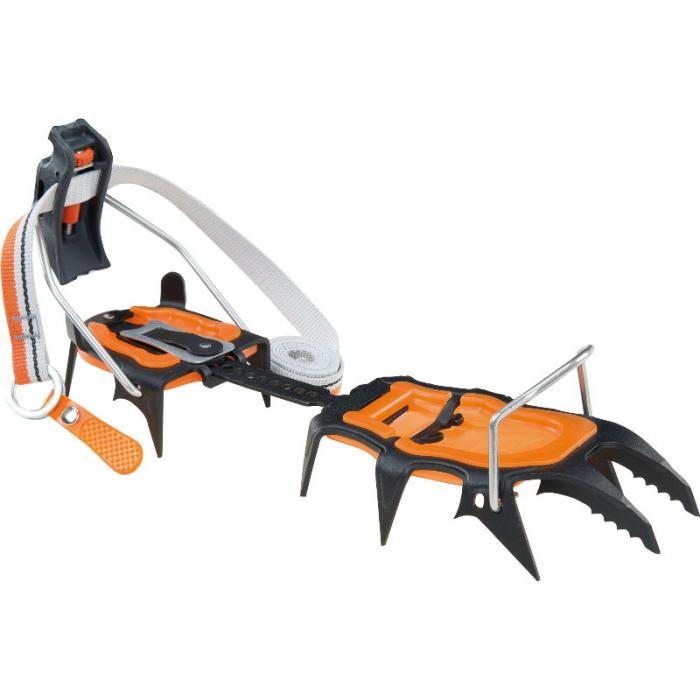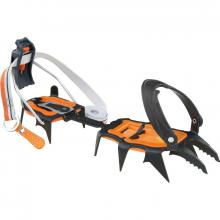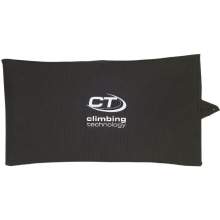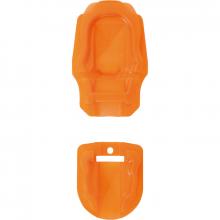How to use Crampon correctly with instructional pictures.
Lycan Automatic
Description
designed for technical mountaineering, goulottes and ice climbing;
hardened, painted steel frame structure;
piercing armored T shape front spikes for excellent penetration in hard ice (fig. 4);
innovative macro-setting system to quickly switch from EU 36÷43 size range to EU 42÷47 (fig. 1 » fig. 2 » fig. 3);
new double lever system for size adjustment, easy to operate with one hand only (fig. 5);
dovetailed exchangeable antibotts, equipped with bellows to prevent snow build-up beneath the crampon.
available in the versions: semiautomatic (offers a quick fit heel clip with tough plastic front straps for boots with a compatible sole unit) or automatic (offers a quick fit heel clip with a front toe bail for boots with a compatible sole unit)
Retail price
This Product is Hard to Find.
We don’t know where you can buy this item online in the US. We’ll continue to check all the major retailers and will update this page as soon as we find one.
If you know where to find this online in the US, let us know, and we’ll add the link.
Weight per Pair (g / oz)  Weight per Pair (g / oz)In grams and ounces, the weight of both crampons together, as stated by the manufacturer/brand. If there are differences in weight (due to multiple sizes or optional accessories) we'll note those here. | 1090 g / 38.45 oz |
| Ideal Uses | Technical Mountaineering / Alpine |
| Binding System | Automatic |
| Sizing | EU 36 - 47 |
| Front Points | Horizontal Dual |
| Front Point Offset | No |
| Number of Points | 12 |
| Main Material | Hardened Painted Steel |
| Wear Indicators | No |
| Anti-Ball Plates | Included |
| Crampon Case | Sold Separately (see the case here) |
| Heel Spur Attachment | None made for this model |
Certification  CertificationsThe main climbing gear certifications are CE and UIAA--and normally the UIAA creates the rules that the CE body also supports. When possible, we try to list all the certifications the product carries. To sell a climbing product in Europe, the device must be CE certified. There are no official requirements to sell climbing gear in the US. The UIAA certification is a voluntary process. Learn MoreRock and Ice Certifications Guide |
CE, UIAA |
No reviews yet.
This video shows how to sharpen your crampon correctly.
General information including warnings, marking, maintenance and lifespan etc.
The UIAA equipment standard provides a baseline for equipment performance in a test lab under controlled conditions on new equipment. Although these test conditions are relevant to the conditions encountered climbing, conditions encountered at the crags and the condition of the equipment are equally important. This recommendation from the UIAA member federation The British Mountaineering Council (BMC) provides vital equipment information that is NOT explicitly addressed in the standard, particularly failure modes of the equipment and recommendations for the use, inspection, maintenance, and retirement of equipment.
A pictoral representation of the UIAA-153 and EN-893 standards for crampons.






